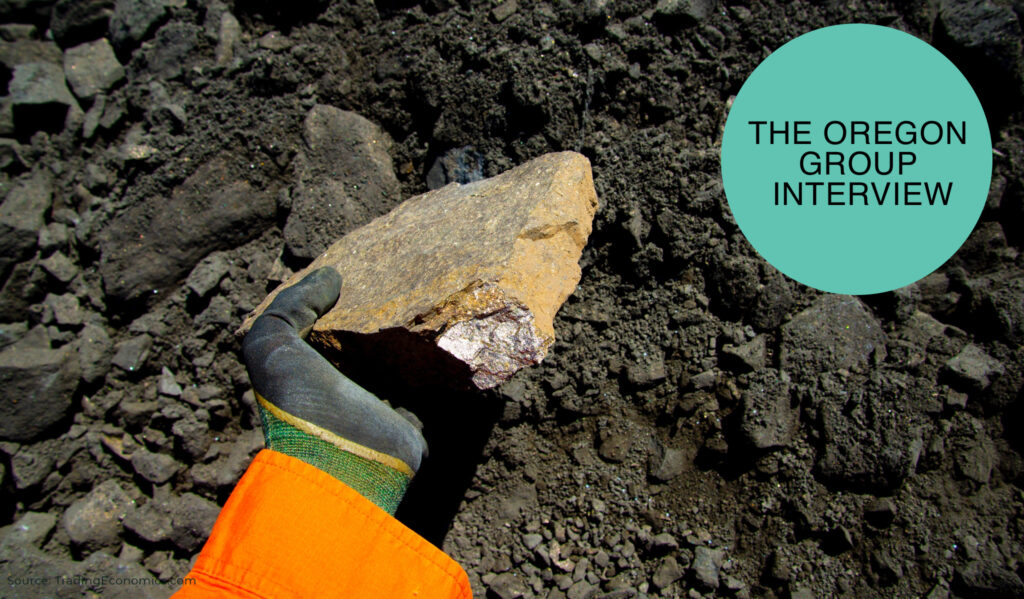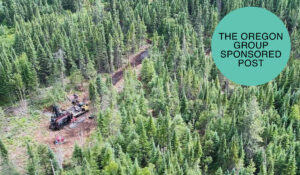Q&A with Canada Nickel CEO, Mark Selby.
Nickel demand is surging, driven by its critical role in electric vehicle (EV) batteries, stainless steel, and defense applications. Yet, the global supply chain is increasingly concentrated in Indonesia and controlled by Chinese interests, raising serious concerns for the West. With the U.S. and its allies scrambling to secure alternative sources, Canada is emerging as a strategic supplier of choice.
In this exclusive Q&A, Mark Selby, CEO of Canada Nickel, explains why the nickel market isn’t as weak as headlines suggest, how Indonesia’s dominance may be peaking, and why large-scale nickel projects outside of China are critical for long-term supply security.
Mark Selby has been in senior management of mining companies for several decades. He is a recognized authority on global nickel market since leading the commodity research and strategy functions for the last of the large standalone Western World nickel producers, Inco, back in early 2000s before it was acquired by Vale in 2006. Active in nickel for more than 20 years and currently leading Canada Nickel Company.
Q&A
Christian Purefoy (The Oregon Group): Mark, nickel prices are low, and the news seems bad — but you seem very upbeat. Why do you think the nickel market could change?
Mark Selby (Canada Nickel): It’s true the nickel market is not happy right now, but many investors don’t fully grasp the supply and demand dynamics of nickel.
The headlines about nickel at the moment — “It’s the worst metal ever!” — don’t match reality. Zoom the chart out from recent volatility and nickel prices are trading roughly double, relative to 2016.
Nickel demand has historically grown at 4-5% annually, driven by stainless steel and alloys, which are highly recyclable and have long lifecycles. This growth rate is often underestimated, with many analysts focusing on copper and carbon steel, which have lower growth rates. Electric vehicles, as a major demand driver, is also often under-appreciated. So, since 2020, nickel demand has actually grown by nearly 9% per year, far exceeding analysts’ predictions at the time.
And 2025, I think, really is a pivot point.
Christian Purefoy (The Oregon Group): The argument is that Indonesia oversupplies the market, keeping prices low to keep out the competition. Why would Indonesia start to manage nickel supply differently?
Mark Selby (Canada Nickel): There’s no denying Indonesia central role in the global market, it’s the largest producer by far, about 60% of global nickel supply, with its share in global nickel production increasing from 5% in 2015 to over 60% in 2024. This is more than OPEC at its peak in the 1970s.
So, Indonesia is critical to the global market — they have the ability to impact the market by limiting mining and exports — but, likewise, the price of nickel is now very important to the Indonesian economy.
And, something is happening with ore-grades in Indonesia: they’re declining, meaningfully, which mean Indonesia will have to start managing production and exports.
Christian Purefoy (The Oregon Group): This seems counter to most forecasts that suggest Indonesia’s share of global nickel production is set to rise for some time.
Mark Selby (Canada Nickel): What you need to understand is the geological reality of laterite deposits in the region, which are really easy to high-grade deposits. I mean, you’ve got this soil, right, 5 to 50 meters deep with high grade, spread out all over the place, which means you can just go in and dig up the highest grade, highest quality portion of it first. And the amount of ore Indonesia is mining, is crazy. Back in 2005, it was maybe 6-7 million tons a year, but today, we’re talking 200 million tons a year.
So, naturally, ore grades are falling.
Fifteen years ago, you were looking at an marginal grade of about 2%; five years ago, an marginal grade of 1.8%; a couple of years back, 1.6%; and now the marginal supply is down as low as 1.4-1.5%.
If you’re Indonesia, and you’ve got this resource that’s a key part of your economy, you want to make sure you are maximising the value from what is, lets face it, a limited resource. This is not like those big open pit copper or nickel sulfide deposits that go on for 30 years. Once that soil’s gone, it’s gone.
Indonesia has the ability to manage the amount of ore that gets mined, and it is in the country’s interest to do so, to maximise value from the resource.
Christian Purefoy (The Oregon Group): What signs should we watch for to see if Indonesia is managing supply and prices?
Mark Selby (Canada Nickel): Pay attention to Indonesian ore prices. When they squeezed supply last summer, the price of Indonesian ore increased significantly. Indonesia had eased off on supply restrictions in late 2024, but this was likely due to pressure from China to maintain ore supplies. We expect them to start managing supply more intentionally in the near future, which will likely drive up ore prices and the floor price for nickel.
Christian Purefoy (The Oregon Group): Why should investors care if Indonesia controls most of the world’s nickel? Tell us more about the Indonesia-China connection.
Mark Selby (Canada Nickel): A new report has just been released, showing Chinese companies control about 75% of Indonesia’s nickel refining capacity. This is important as governments across the West are trying to secure their critical mineral supply chains, especially for metals like nickel, which are crucial for aerospace and defence.
And it all goes back to this issue of a monopoly that is running out of high grade ore.
Let’s not forget, we’re really talking about the southeast corner of the island of Sulawesi and few islands offshore and that’s it.
But, it doesn’t have to be a geopolitical shock between the US and China. The region is on multiple seismic fault-lines and it could just be an earthquake that knocks out production, or a portion of 60% of global supply.
Christian Purefoy (The Oregon Group): So, what’s the alternative to Indonesian nickel?
Mark Selby (Canada Nickel): The alternative needs to be large-scale projects outside of Indonesia and China. Because there hasn’t been significant global nickel exploration for a long time, there is a massive gap in the development pipeline. The last major high-grade nickel sulfide discovery was Voisey’s Bay in 1992.
Christian Purefoy (The Oregon Group): What about the Australian mines that have recently closed?
Mark Selby (Canada Nickel): The closures in Australia weren’t driven by nickel prices, which were relatively high in Australian dollar terms, compared to when the mines were developed. Many of the Australian mines were simply older assets that had been under-invested. And, western Australia also has high structural costs for energy and labour. So, the closures are more about these factors rather than the nickel price.
Christian Purefoy (The Oregon Group): How does Canada Nickel fit into this picture?
Mark Selby (Canada Nickel): Canada Nickel is developing the Crawford Nickel Sulphide Project, which is the second-largest nickel reserve globally. It is expected to be the third-largest nickel sulphide operation globally. We’re working toward a construction decision in 2025. The Crawford project is located in an established mining camp with significant infrastructure, including roads, power and rail.
Also, we are developing a simple carbon storage approach called IPT Carbonation, which utilizes tailings and conditions them with CO2. We are working towards developing the net-zero metals subsidiary that will have nickel, stainless, and alloy steel processing facilities in Timmins. This is expected to be the largest such facility in North America and Canada’s only large stainless & alloy facility.
Christian Purefoy (The Oregon Group): And what about the environmental impact of the project?
Mark Selby (Canada Nickel): Yes, this is important. Indonesia’s nickel production has a large carbon footprint, between 50 to 80 tons of CO2 per ton of nickel. In comparison, Canada Nickel’s project can potentially produce zero-carbon nickel.
This will ensure the US can meet nickel demand in a way that is not controlled by Indonesia and China, as well as being environmentally friendly.
Christian Purefoy (The Oregon Group): There’s a perception that permitting is difficult in Canada. How are you addressing this?
Mark Selby (Canada Nickel):We have advanced the Crawford Project from resource to two-thirds through the permitting process in just over five years, and expect to have the permits this Fall. This pace is near a modern-day record. Government attitudes toward permitting have changed dramatically, with a focus on getting China out of the critical mineral supply chain.
Christian Purefoy (The Oregon Group): Thanks Mark, this has been very informative.
Mark Selby (Canada Nickel): You’re welcome.
Subscribe for Investment Insights. Stay Ahead.
Investment market and industry insights delivered to you in real-time.




















